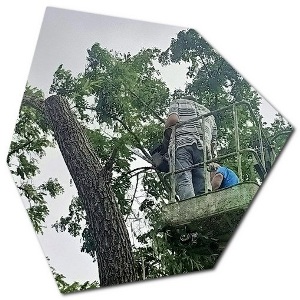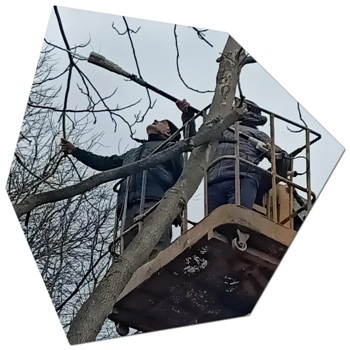The simplest pruning technique is often referred to as “pinching” or “tip pruning.” This technique involves removing the very tips of new growth or shoots using your fingers or pruning shears. Pinching is commonly used for small plants, young shrubs, and herbaceous perennials. It’s an easy and straightforward method that can help encourage bushier growth and maintain a more compact and attractive plant shape.
Pruning is a horticultural practice that involves the removal of specific parts of a plant, such as branches, leaves, or buds, to improve its overall health, appearance, and productivity. Different plants require different pruning techniques. Here are some basic pruning techniques commonly used for various plants:
- Pinching: Pinching involves using your fingers or pruning shears to remove the tips of young shoots or stems. This encourages branching and results in a bushier, more compact growth. It’s often used on herbaceous plants and some shrubs.
- Thinning: Thinning involves selectively removing entire branches or stems from a plant. This technique improves air circulation and light penetration, reducing the risk of disease and promoting healthy growth. Thinning is commonly used on trees, shrubs, and certain perennials.
- Heading Back: Heading back is the practice of cutting back the tips of branches or shoots to a certain point. This technique stimulates new growth and can help control the size and shape of a plant. Heading back is often used on shrubs, hedges, and trees.
- Deadheading: Deadheading refers to the removal of spent flowers from plants. This prevents the plant from using energy to produce seeds and redirects its energy toward producing more flowers or foliage. Deadheading is commonly used on flowering plants to prolong their blooming period.
- Crown Reduction: Crown reduction involves removing larger branches from the outer edges of a tree’s canopy. This technique reduces the overall size of the tree’s crown while maintaining its natural shape. Crown reduction can help manage the size of a tree and improve its structure.
- Canopy Lifting: Canopy lifting involves removing lower branches from a tree’s canopy to create more vertical clearance beneath the tree. This technique is often used to improve visibility, access, and aesthetics in urban areas.
- Espalier: Espalier is a technique used to train trees or shrubs to grow flat against a wall or support structure. This method is often used to save space and create decorative patterns with plants.
- Pollarding: Pollarding is a severe pruning technique that involves cutting back a tree to its main trunk or major branches. This technique is used to control the size of the tree and promote vigorous new growth. It’s often used on certain tree species like willows.
- Renewal Pruning: Renewal pruning involves cutting back a plant close to the ground to encourage fresh new growth. This technique is used to rejuvenate overgrown or straggly plants.
- Topiary: Topiary is the art of shaping plants into ornamental forms, often resembling animals, geometric shapes, or intricate designs. It involves regular pruning to maintain the desired shape.

It’s important to note that different plants have different growth habits and requirements, so the specific pruning techniques you use will depend on the type of plant and your goals for its growth and appearance. Always use sharp, clean tools and follow best practices to ensure the health and vitality of your plants. If you’re unsure about how to prune a specific plant, consulting a gardening expert or arborist can provide valuable guidance. Basics of tree pruning >>
What is routine pruning?
Routine pruning, also known as maintenance pruning, refers to the regular and ongoing process of trimming and shaping plants to keep them healthy, well-structured, and aesthetically pleasing. It involves the selective removal of specific plant parts, such as branches, shoots, or flowers, to maintain the plant’s form, encourage new growth, and prevent issues like disease and overgrowth. Routine pruning is an essential aspect of plant care and contributes to the overall health and appearance of trees, shrubs, and other plants.
Key objectives of routine pruning include:
- Plant Health: Removing dead, diseased, or damaged branches helps prevent the spread of diseases and pests, and allows the plant to allocate its resources to healthier parts.
- Shape and Structure: Regular pruning helps maintain the desired shape and structure of the plant. It prevents the plant from becoming overgrown, uneven, or misshapen.
- Aesthetics: Routine pruning enhances the visual appeal of the plant by promoting healthy growth and maintaining a neat and tidy appearance.
- Safety: Removing branches that are at risk of falling due to weakness or disease reduces the risk of accidents and property damage.
- Air Circulation and Light: Thinning out crowded areas of the plant improves air circulation and light penetration, which reduces the likelihood of fungal diseases and encourages better growth.
- Flower and Fruit Production: Proper pruning techniques can enhance flower and fruit production by promoting the growth of new buds and increasing sunlight exposure.
- Size Management: Routine pruning helps control the size of plants, preventing them from outgrowing their allotted space and becoming a maintenance challenge.

The frequency of routine pruning can vary depending on the type of plant, its growth rate, and your specific goals for maintenance. For most plants, routine pruning is typically carried out once a year, often during the dormant season (late autumn to early spring) when the plant’s growth is slower and its structure is more visible.
When conducting routine pruning, it’s important to use sharp, clean pruning tools to make precise cuts that minimize damage to the plant. Different plants require different pruning techniques, so it’s recommended to familiarize yourself with the specific needs of the plants in your garden or landscape. If you’re unsure about how to prune a particular plant, seeking advice from a certified arborist or gardening expert can help ensure successful and healthy results.
What is the tree lopping technique?
Tree lopping, also known as tree topping, is a pruning technique that involves cutting off the upper portion of a tree’s main stem or branches, often leaving behind stubs or lateral branches. While tree lopping was historically used as a method to control tree height and reduce potential hazards, it is now widely regarded as a harmful and detrimental practice that can severely damage trees and negatively impact their health.
Tree lopping has several negative consequences:
- Weak Regrowth: Lopping stimulates the growth of numerous new shoots from the cut ends, resulting in a dense cluster of weakly attached branches that are more prone to breakage. This regrowth is often referred to as “water sprouts” or “suckers.”
- Sunburn and Disease: The removal of a tree’s upper canopy exposes the remaining branches to intense sunlight, causing sunburn and making the tree susceptible to diseases and pests.
- Structural Issues: Lopped trees develop structurally weak growth patterns due to the rapid and uncontrolled regrowth. These growth patterns can lead to an imbalanced and unstable tree structure.
- Long-Term Health Decline: Trees that are repeatedly lopped are at risk of long-term health decline, reduced lifespan, and increased vulnerability to environmental stressors.
- Aesthetic Impact: Lopped trees often have an unnatural and disfigured appearance, which can negatively affect the visual appeal of landscapes.
- Costly Maintenance: The constant need for lopping and the management of regrowth make lopped trees more expensive to maintain in the long run.
Due to these negative outcomes, tree lopping is discouraged and considered an outdated and harmful practice by arborists, horticulturists, and tree care professionals. Instead of tree lopping, proper tree pruning techniques should be employed to achieve desired results while maintaining the health, structure, and aesthetics of the tree.
If you have concerns about the size, shape, or health of a tree, it’s best to consult with a certified arborist or tree care professional. They can recommend appropriate pruning techniques that promote the tree’s well-being and maintain its natural form. Remember that responsible tree care practices contribute to the longevity and vitality of trees in the landscape. Basic techniques for tree pruning and cutting >>
What is the simplest pruning technique?
Here’s how to perform the pinching technique:
- Identify New Growth: Look for the tips of branches or stems that are actively growing. These are often the soft, young shoots at the ends of the plant.
- Pinch or Trim: Using your fingers or pruning shears, gently pinch off the very tip of the new growth. You can also trim it back by a small amount (about 1/4 to 1/2 inch) using clean and sharp pruning shears.
- Repeat as Needed: Depending on the growth rate of the plant, you may need to repeat the pinching process regularly, especially during the growing season. This encourages the plant to branch out and become denser.
- Dispose of Pruned Material: Collect and dispose of the pruned tips to keep the area tidy and prevent disease spread.
Pinching is particularly effective for plants that tend to become leggy (with long, sparse growth) or that you want to keep more compact and full. It’s often used for flowering plants like chrysanthemums, petunias, and impatiens, as well as some shrubs and herbs. Keep in mind that pinching is generally used on young growth and should not be applied to mature or woody branches.
Before employing any pruning technique, it’s a good idea to familiarize yourself with the specific needs of the plant you’re working with. Different plants have different growth habits and responses to pruning. If you’re unsure, consulting with a gardening expert or professional can help ensure successful and appropriate results.
